Six years ago, my boys and I started to learn Arabic at home. I had a difficult time finding secular resources that were written for an English speaking parent. Over the years we have found a few resources and have made some progress. My youngest started a little formal instruction in Kindergarten, but she grew up around my boys practicing the language. One of her favorite lullabies as a baby was the Arabic alphabet song. I can’t explain why that soothed her, but she liked it.
We have not had assistance from a native speaker for the most part. We did meet with a local woman who was considering opening an Arabic Saturday school. She found my children’s pronunciation to be pretty good. I have a background in working with English as a second language students on accent reduction so I’m pretty picky about pronunciation.
I wanted to go over what each child is currently using. They are all working at a different level and using different resources.
1st Grader
Over the last few years my daughter has had exposure to Arabic through the Arabian Sinbad DVDs. Last school year she spent time learning the alphabet song too. Now, she is just starting to learn to read and write Arabic. This should take her several years.
Here are the things she is using to learn Arabic:
Arabian Sinbad DVDs
There is option to turn on English subtitles at the bottom, but the DVDs are entirely in Arabic. It has songs interspersed throughout a story line.
Arabian Sinbad Flashcards
She is just starting to use these. I’m having her look for some of the letters that she is currently learning to read and write.
Arabian Sinbad Software program
My daughter occasionally uses this one now as she is interested. She likes the art section of the CD-ROM. Most of it involves interactive activities that teach vocabulary.
Arabiah HD App
This is an amazing app to learn the letters and the sounds they make. My daughter and I started this last year. She has one more level to go on the easy setting. I’m attempting to beat the normal setting. Once all of the normal settings are conquered, we will be able to start the hard setting.
Alif Baa
This is a new addition for her this school year. I’m slowly starting to go through the Alif Baa curriculum with her to help her learn to read, write, hear, and pronounce the sounds of Arabic. Alif Baa is often used in beginning college classes to help students learn how to read and write Arabic. It is light on vocabulary. It comes with a DVD with tons of audio exercises. I highly recommend it for the ear training that it does. It helps us learn to hear the sounds of Arabic which is essential if we want to be able to pronounce them correctly.
Here my daughter is doing a writing exercise. The man on the DVD is writing a letter by itself and in words.
In this picture my 6 year old is doing her first dictation exercise from Alif Baa. The DVD pronounced a word or syllable and she wrote it down.
Abjad Magnetic Connecting Letters
We aren’t currently using these, but I may pull them out from time to time for a change of pace. In case you were unaware, Arabic letters change based on where they are in a word. These magnetic letters will connect to other letters and have the ability to be adapted so they are in the correct format in a word.
5th Grader
He has been learning to read and write Arabic for several years. Right now, he is close to being able to sound out and pronounce most words. He is also learning vocabulary while he practices reading.
Here are the things he is using to learn Arabic:
Arabian Sinbad DVDs
My kids watch these together. They typically watch a foreign language DVD each school day, but are rotating between the languages they are learning. Last month they spent time watching French videos and this month they will be attempting to finish the entire Arabian Sinbad DVD series.
Arabian Sinbad Flashcards
I sit down with him and he practices reading the Arabic to me. These cards aren’t vowelized so I sometimes give him hints at the short vowels. I cover up the transliteration and the English meaning until he reads the word and tells me what it means in English.
MSA Arabic on Mango
My boys just started this a few weeks ago. We were able to get Mango access through a neighboring library. Now my 5th grader rotates between Mango and reading his Arabic cards. Mango is a good option to help with conversation skills.
7th Grader
My 7th grader has a natural bent toward learning languages. Last school year he moved to the Arabic for Life curriculum. When he is done it should equal 4 years of high school Arabic. It will probably take many more years before he finishes it though! It isn’t easy. I’ll be adding in an Arabic reader and a conversation course when he makes it at least half-way through the book. That will probably be sometime during his 8th grade year.
Here are the things he is using to learn Arabic:
Arabian Sinbad DVDs
My kids have learned quite a bit of vocabulary from this series. The only drawback is that I haven’t been able to get them to play on our DVD player. They will only play on the computer.
MSA Arabic on Mango
My 7th grader is really enjoying Mango. It is similar to Rosetta Stone, but is focused more on remembering and repeating vocabulary and conversational phrases. I think this will make a great addition into our rotation.
Arabic for Life
From what I have been able to discover, this textbook is used for elementary and intermediate Arabic classes in college. Our goal is to make it through this book before the end of high school. An included DVD helps with pronunciation and audio activities.
At the beginning of the textbook is a large introduction that goes over reading and writing Arabic before you start the meat of the book. I had my son spend much of last school year on the introduction section (about 100 pages) reviewing before he started on the vocabulary, grammar, and reading portions of the textbook. Some of the translation activities are big and my son can get a little lost. When that happens, we sit down together and figure it out. My son’s Arabic skills are quite a bit beyond my own, but I am still able to guide him on figuring things out. The publisher also provided me with an answer key so I can check some of his work.
This book has also been great for helping my son learn how to study. Memorizing new vocabulary words doesn’t just come from osmosis or from reading it once or twice. He has to put in some time and effort to learn and remember.
Once my son learns a little more vocabulary and conversation skills, he will have an opportunity to interact with a native speaker online.
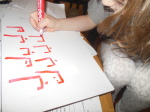
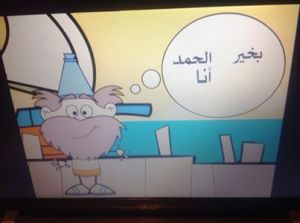
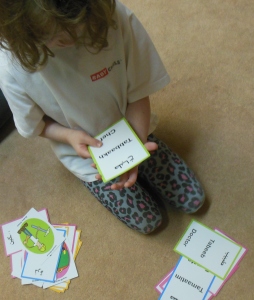
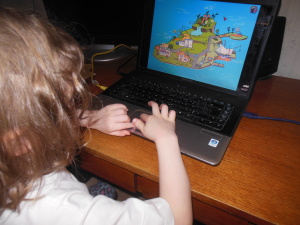
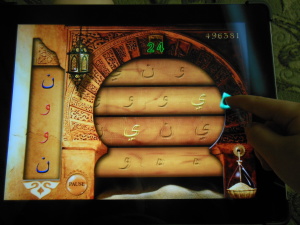
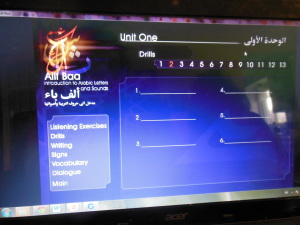
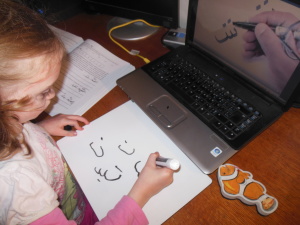
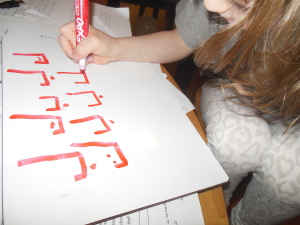
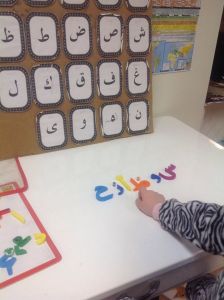
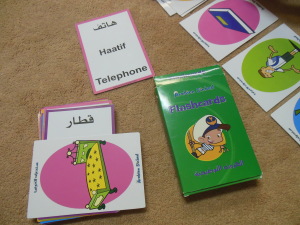
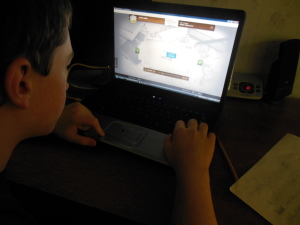
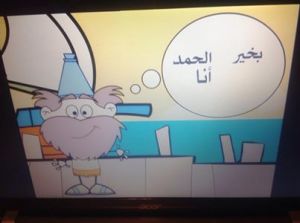
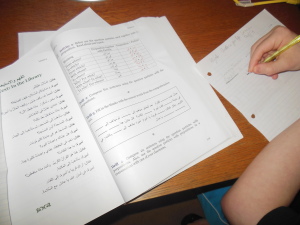
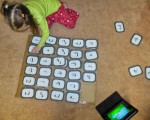
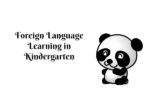
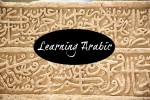
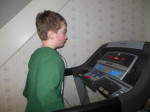
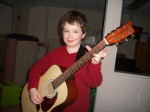

Great resources! I’m not a native speaker…are you? Does anyone in your family speak Arabic? None in mine and I’m not sure if it’s an achievable dream consequently….
I want to thank you so much for sharing the resources you are using for Arabic language study in your homeschool. I am homeschooling my children and living in the Middle East, so I am very keen for my children to learn Arabic. Thanks to your recommendation, I have purchased Arabian Sinbad and my kids are loving it. They beg me to watch the DVD every day! My oldest child (aged 13) is using Alif Baa and it is working well for him.
Recently, I came across a new curriculum which Johns Hopkins University is using with students grades 2-6 in their talented programme. It is Mastering Arabic by Jane Wightwick and Mahmoud Gaafar. It is designed for self-study so might be useful in the homeschool setting. I’m thinking of giving it a try. I just thought I would mention it to you in case you would like to check it out, too. Thanks again!
Thanks for the recommendation.
We also homeschooled for many years whilst living in the Middle East. My children picked up lots through watching the Freej cartoons. 😊 Loved them.
It has been my prayer and dream that our kids will learn Arabic because we, too, love other cultures and have a heart for missions. As a non-Arabic speaker (only one university in our country teaches Arabic, we live in a small country), your posts challenged me and have given me the hope that it is possible. Thank you! 🙂
This truly attracts me. In the near future she can read Quran then. A very benificial learning of Arabic.
Very interesting! I’m curious about why you chose to teach your children Arabic.
This post should answer your question 🙂 https://eclectic-homeschool.com/6-reasons-why-we-are-learning-multiple-languages/
Thank you for sharing! I am also a non-native speaker trying to teach Arabic to my kids. We have lots of guidance from native speakers, however, and I commend you for your efforts and following though on such a challenging project. I have also used: http://www.syraj.com/ and bought some DVD’s with nursery rhymes and songs. The little ones sing along and the older ones start to pick out words that they know. Another great song resource is Toyor al Jannah on youtube http://www.youtube.com/watch?v=7Homnf-iKhg
This is so cool! I spent a couple months in Egypt studying Arabic, and I learned how to recite a love poem. Thanks for sharing these resources.
Sounds like an awesome opportunity you had!
I just found your blog and have been reading through your posts . Well done on teaching your kids foreign languages . I am teaching my kids english french spanish and arabic . I am considering adding greek or latin couldn’t decide yet .Thank you for sharing . I like to recommend an extra resource to help you in your language learnign journey brillkids products little reader french spanish and arabic https://user.brillkids.com/onlinestore/
viv